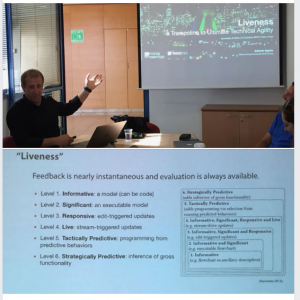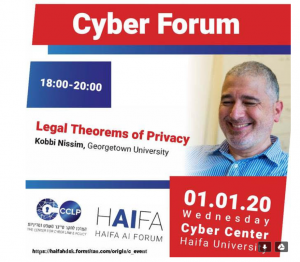Ilan Shimshoni
Bio:
Ilan Shimshoni recieved his B.Sc. in mathematics from the Hebrew University in Jerusalem, his M.Sc. in computer science from the Weizmann Institute of Science, and his Ph.D. in computer science from the University of Illinois at Urbana Champaign (UIUC).
Ilan was a post-doctorate fellow at the faculty of computer science at the Technion, from 1995—1998, and was a member of the faculty of industrial engineering and management from 1998—2005. He joined the department of Information Systems (IS) at Haifa University in October 2005. Ilan was the head of the IS department between 2005-2009.
Abstract :
This paper focuses on the re-assembly of an archaeological artifact, given images of its fragments.
This problem can be considered as a special challenging case of puzzle solving.
The restricted case of re-assembly of a natural image from square pieces has been investigated extensively and was shown to be a difficult problem in its own right.
Likewise, the case of matching “clean” 2D polygons/splines based solely on their geometric properties has been studied.
But what if these ideal conditions do not hold?
This is the problem addressed in the paper.
Three unique characteristics of archaeological fragments make puzzle solving extremely difficult:
(1) The fragments are of general shape;
(2) They are abraded, especially at the boundaries (where the strongest cues for matching should exist);
and (3) The domain of valid transformations between the pieces is continuous.
The key contribution of this paper is a fully-automatic and general algorithm that addresses puzzle solving in this intriguing domain.
We show that our approach manages to correctly reassemble dozens of broken artifacts and frescoes.
Uzy Smilansky
Bio:
Uzy Smilansky is a professor emeritus in the Department of Physics of Complex Systems at the Weizmann Institute of Science. He received his PhD at the Weizmann Institute of Science in 1969, and in 1971 he completed a post-doctoral fellowship at the Max Planck Institute in Germany. His research focused on the “fingerprints” of the classic chaos theory of quantum mechanics. He is also engaged in the development of computerized and mathematical methods for aiding archaeological research.
Smilansky’s academic career is highly interdisciplinary, covering a broad spectrum of fields and methods. He made pioneering contributions to various research directions: chaotic scattering, quantum billiards, scattering approach to quantization (the exterior interior duality). He introduced quantum chaos in graphs and made seminal contributions to the studies of nodal networks and domains.
In 2002 Smilansky started to develop computer based methods for archaeological research, concentrating on the taxonomy of small artefacts by their digital images in 3-D, obtained by precise optical scanning. This activity, now integrated in the Archaeology Institute at the Hebrew University, introduced methodologies which are used by most archaeology groups in Israel.
Abstract :
The application of computer based methods in archaeology increased exponentially during the past years. It went hand in hand with similar growth in the availability of relevant hardware and dedicated software, and with the intensification of the interaction between computer scientists and archaeologists. This process is far from being over, and I shall try to review the prospects, challenges and the possible pitfalls, based on my experience gathered during the last decades
Moshe Lavee
Bio:
Moshe Lavee is a senior lecturer in Talmud and Midrash in the department of Jewish History in the University of Haifa, director and founder of eLijah-Lab and co-director and founder of the new Haifa BSc program in Digital Humanities. He is also the chair of the Inter-disciplinary Centre for Genizah Research in The University of Haifa.
In addition to his work in DH he studies Aggadic Midrash and Judeo-Arabic homilies in the communities of the Genizah, and the on themes of conversion, gender and the construction and demarcation of identity in rabbinic Literature, as well as literary forms, intermingling of genres and the role of authorship in Rabbinic and adjacent literatures. Moshe runs programs for young leadership and educators (“Mashavah Techila” and “Ruach Carmel”), working to foster relationships between the academic world and the larger community.



